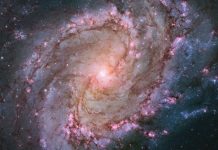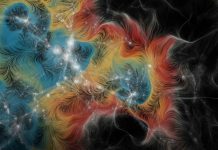
A groundbreaking study has shifted our understanding of the dwarf galaxies orbiting the Milky Way, challenging long-held beliefs about their nature and composition.
Previously thought to be ancient satellites that have been circling our galaxy for nearly 10 billion years, new evidence suggests that most dwarf galaxies are actually newcomers, possibly on a path to destruction shortly after entering the Milky Way’s halo.
This revelation comes from the latest data provided by the European Space Agency’s (ESA) Gaia satellite.
Researchers from the Paris Observatory—PSL, the French National Centre for Scientific Research (CNRS), and the Leibniz Institute for Astrophysics Potsdam (AIP) have brought a new perspective to our understanding of these celestial objects.
Published in the Monthly Notices of the Royal Astronomical Society, this study raises significant questions about the standard cosmological model, particularly regarding dark matter, a mysterious substance thought to make up most of the universe’s mass.
Traditionally, scientists believed that dwarf galaxies contained vast amounts of dark matter, which helped them withstand the gravitational pull of the Milky Way.
This dark matter was thought to be responsible for the varying speeds of stars within these galaxies.
However, Gaia’s data paints a different picture. The research team has used this data to trace the history of the Milky Way, linking the entry time of an object into the galaxy’s halo to its orbital energy.
They found that objects entering the halo earlier, when the Milky Way was less massive, have lower orbital energies compared to those arriving later.
Most dwarf galaxies, surprisingly, have higher orbital energies than the Sagittarius dwarf galaxy, which joined the Milky Way’s halo about 5 to 6 billion years ago. This suggests that the majority of dwarf galaxies are relatively recent arrivals, having entered less than three billion years ago.
The study also describes a simulation showing the transformation of a gas-rich, rotation-dominated galaxy into a spherical dwarf galaxy.
The process is violent, involving collisions with the hot gas of the Galactic halo that strip the dwarf galaxies of their gas. This transformation from gas-rich systems with rotating gas and stars to gas-free systems with stars moving randomly is a key finding.
The loss of gas and the turbulent process disrupt the equilibrium in these dwarf galaxies. The velocities of their stars are no longer balanced with their gravitational pull. This lack of equilibrium makes it challenging to estimate the amount of dark matter in these galaxies.
Interestingly, this study casts doubt on the role of dark matter in these galaxies. Previously, dark matter was thought to stabilize dwarf galaxies, but the new findings suggest that if a significant amount of dark matter were present, it would have maintained the original rotating disk of stars, which is not observed.
This new understanding of dwarf galaxies raises several questions. Where are the numerous dark-matter-dominated dwarf galaxies predicted by the standard cosmological model? How can we determine the dark matter content in a dwarf galaxy if it’s not in equilibrium?
What other observations can help distinguish between these newly understood out-of-equilibrium dwarf galaxies and the classic view of dark-matter-dominated dwarfs?
This study not only changes our view of the dwarf galaxies around us but also opens up a whole new set of questions about the nature of dark matter and the evolution of galaxies.



